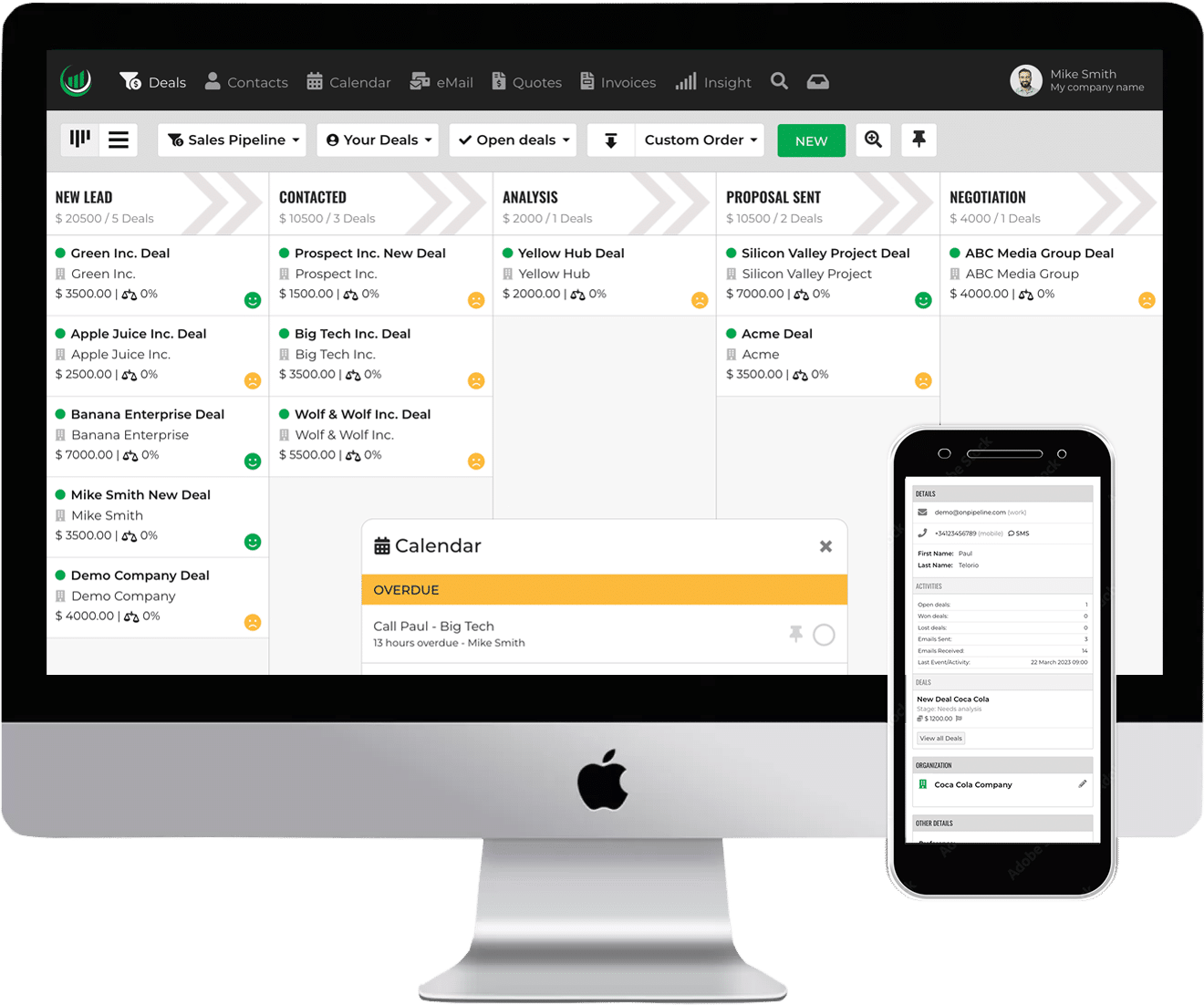The process of implementing a sales pipeline within your CRM can be daunting and overwhelming, leading to common mistakes that can hinder your success.
A sales pipeline is critical to the success of any sales team. This tool helps sales teams by making the process easier to understand and follow. It also helps them know what tasks to focus on and encourages teamwork. It also helps predict sales outcomes and find ways to make improvements.
By utilizing a sales pipeline, sales teams can achieve better results, close more deals, and ultimately drive business growth.
In this article, we will explore the top mistakes to avoid when implementing a sales pipeline and CRM system.
9 Mistakes to avoid
1. Failure to define a sales process
One of the most common mistakes when implementing a sales pipeline and CRM is the failure to define a sales process and the number of your pipeline stages. Before implementing any system, it is essential to understand your sales process and create a clear roadmap for how you will use the new system to support it.
2. Lack of leadership buy-in
Another common mistake is a lack of leadership buy-in. When implementing a sales pipeline and CRM system, it is essential to have the support of your leadership team. Without their buy-in, it can be challenging to get the rest of your team on board and fully utilize the new system.
3. Inadequate training
This is another common mistake. If your team isn’t trained well, they might have trouble using the new system. This could lead to frustration and a lack of adoption. Make sure you invest in thorough training for your team to ensure success.
3. Failure to customize
Also the failure to customize the system to your business is a common mistake. Each business has unique needs, and a one-size-fits-all approach may not work. Make sure you take the time to customize the system to fit your specific needs.
4. Overloading the system with data
Transferring your data to the new system can make it slower and harder to navigate. Be selective about what data you import and ensure that it is relevant and up-to-date.
5. Lack of integration with other systems
To make things more efficient, connect your sales pipeline and CRM system to other systems, such as your marketing automation platform. This will create a smooth flow of data.
6. Not using the system to its full potential
Make sure to use all the system’s features and find ways to improve your processes.
7. Failure to track and analyze data
Your sales pipeline and CRM system should be used to track and analyze sales data, such as lead sources, conversion rates, and customer behavior. This information can provide valuable insights into your sales process and help you make informed decisions.
8. Ignoring feedback from users
This can lead to frustration and a lack of adoption. Listen to your team’s feedback and adjust the system accordingly to meet their needs.
9. Lack of maintenance and updates
Your sales pipeline and CRM system should be continually updated and maintained to ensure that it is functioning optimally and meeting your business’s evolving needs.
Why a sales pipeline is important
A sales pipeline is a picture that shows the steps a customer takes before buying something. Sales management relies on it to help track progress, manage activities, and close deals.
Here are the top five reasons why a sales pipeline is so important:
1. Provides visibility and clarity
A sales pipeline helps sales teams see where a customer is in the buying journey and what actions to take next. Sales teams stay organized and focused, so they don’t miss any potential leads.
2. Helps prioritize activities
Sales teams use a sales pipeline to prioritize their activities. This helps them focus on the most promising leads and deals. Sales teams can track the progress of each deal in the pipeline. This helps them identify valuable opportunities and manage their time and resources effectively.
3. Facilitates collaboration and communication
Sales teams use a sales pipeline to collaborate with marketing and customer service. Teams can work together by sharing information about the customer journey and where each customer is in the pipeline. This helps provide a seamless and personalized experience for the customer.
4. Enables accurate forecasting
A sales pipeline helps sales teams forecast revenue and set performance targets accurately. Sales teams can predict future sales revenue by tracking deals in the pipeline and analyzing historical data. They can then adjust their strategies accordingly.
5. Identifies areas for improvement
Finally, a sales pipeline helps sales teams identify areas for improvement in their sales process. By tracking key metrics such as conversion rates and average deal size, teams can identify areas where they can improve their processes and achieve better results.


